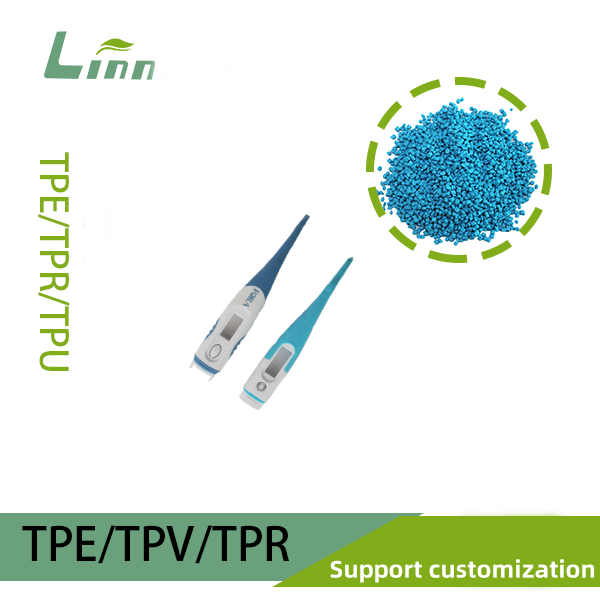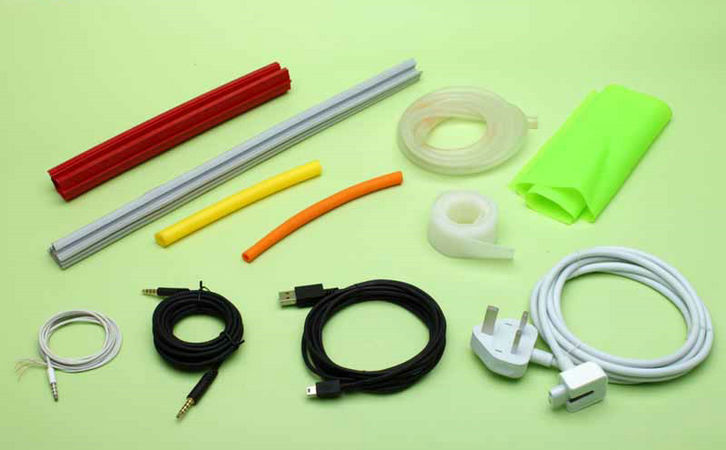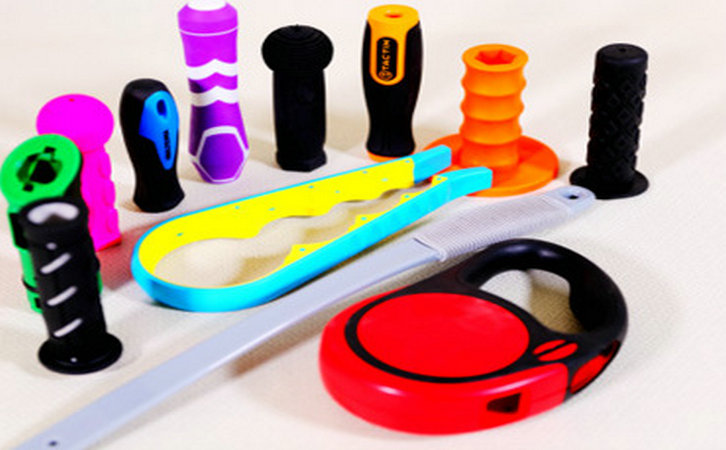As someone who’s been knee-deep in the plastics industry for over 12 years, I’ve tackled countless challenges in working with TPE (Thermoplastic Elastomer) materials. One issue that keeps popping up, especially for products like seals, grips, or flexible components, is insufficient rebound resilience—when your TPE part doesn’t snap back to its original shape as expected. It’s a frustrating problem that can compromise functionality, disappoint customers, and lead to costly reworks. If your TPE parts feel too stiff, stay deformed, or lack that satisfying bounce, I’ve got you covered. Drawing from my hands-on experience in injection molding and extrusion, I’ll walk you through why this happens and share practical, field-tested solutions to restore that springy, elastic performance you need.

Understanding Rebound Resilience in TPE
Early in my career, I was puzzled by TPE parts that felt more like rigid plastic than the flexible, rubber-like material they were supposed to be. Rebound resilience, or the ability of a material to recover its shape after deformation, is a hallmark of TPEs, making them ideal for applications like gaskets, wearable devices, or soft-touch handles. When resilience falls short, the part may exhibit compression set (permanent deformation) or feel sluggish, which can be a dealbreaker in industries like automotive or medical. The causes range from material selection to processing errors, and fixing it requires a systematic approach. Let’s dive into the reasons behind poor resilience and how to address them, based on real-world lessons from my time on the factory floor.
Common Causes of Insufficient Rebound Resilience
1. Improper TPE Grade Selection
Not all TPEs are created equal. The material’s base polymer (e.g., SEBS, TPU, TPO) and formulation—including fillers, plasticizers, and elastomeric content—directly affect resilience. High filler content or low elastomer ratios can make TPE stiffer, reducing its ability to rebound. I’ve seen this in projects where cost-driven decisions led to choosing a heavily filled TPE, only to sacrifice elasticity.
For example, a client producing TPE yoga mats struggled with poor rebound because their supplier provided a high-filler SEBS grade to cut costs. Switching to a low-filler, high-elastomer grade restored the mat’s bounce.
2. Overheating During Processing
Excessive melt temperature during injection molding or extrusion can degrade the TPE’s elastomeric chains, reducing resilience. TPEs are sensitive to heat, and prolonged exposure to temperatures above the recommended range (typically 180-220°C) can break down the polymer structure, leading to a stiffer, less elastic part.
I once worked with a manufacturer of TPE seals who noticed their parts weren’t bouncing back after compression. The culprit? A barrel temperature of 235°C, well above the supplier’s recommended 200°C, was degrading the material. Adjusting the temperature fixed the issue.
3. Inadequate Cooling
Improper cooling can lock in internal stresses, reducing a TPE’s ability to rebound. If the part cools too quickly or unevenly, the molecular structure may not set properly, leading to a higher compression set. This is common in thick parts or when mold temperatures are too low.
In a project for TPE medical tubing, rapid cooling in a cold water bath (10°C) caused parts to feel stiff. Switching to a warmer bath (40°C) allowed better molecular relaxation, improving resilience.

4. Excessive Shear Stress
TPEs are shear-sensitive, and high injection or extrusion speeds can disrupt the elastomer’s molecular network, reducing elasticity. This is especially true for softer TPE grades (e.g., Shore A 30-50), where excessive shear can cause chain scission, making the material less springy.
I recall a case where a client molding TPE grips had poor rebound due to a high injection speed (80% of max). Lowering it to 30% and using a two-stage profile restored the material’s elasticity.
5. Moisture or Contamination
Moisture in TPE pellets can cause hydrolysis or splay, weakening the material’s structure and reducing resilience. Contamination from incompatible resins or oils can also disrupt elasticity. I’ve seen this in factories with poor material handling, where TPE pellets absorbed moisture or picked up residues from shared equipment.
6. Aging or Environmental Exposure
Post-production, TPE parts exposed to UV light, high temperatures, or chemicals can lose resilience over time due to additive degradation or polymer chain breakdown. This is common in outdoor applications like TPE weatherstripping, where UV exposure stiffens the material.
Solutions to Improve TPE Rebound Resilience
Based on my experience, here’s a step-by-step guide to restoring and maintaining TPE’s rebound resilience, with solutions tailored to each cause.
1. Select the Right TPE Grade
Start by reviewing your TPE formulation with your supplier. Choose a grade with a high elastomer content and minimal fillers (e.g., calcium carbonate or talc). For applications requiring high resilience, like seals or sports equipment, I recommend SEBS-based TPEs with Shore A hardness below 60 or TPU grades designed for elasticity.
In a project for TPE shoe soles, we switched from a high-filler TPE (30% calcium carbonate) to a low-filler grade (10%). The soles went from stiff to springy, passing durability tests. Always request technical data sheets and test samples to confirm resilience before scaling up.
2. Optimize Melt Temperature
Keep the melt temperature within the supplier’s recommended range (typically 180-220°C for SEBS, 190-230°C for TPU). Avoid overheating, which degrades the elastomeric chains. Use a melt temperature probe to verify actual conditions, as barrel settings can be off by 10-20°C.
I helped a client molding TPE gaskets who had poor rebound due to a 240°C melt temperature. Lowering it to 195°C, as per the supplier’s guidelines, restored elasticity and eliminated burn marks. Monitor barrel zones to ensure consistent heating.
3. Improve Cooling Conditions
Optimize cooling to allow the TPE’s molecular structure to set properly. For injection molding, maintain mold temperatures at 20-40°C—cooler for thin parts, warmer for thick ones or overmolding. In extrusion, use a temperature-controlled water bath (30-50°C) to avoid thermal shock.
In a project for TPE tubing, we fixed poor resilience by switching from a cold water bath (10°C) to a 40°C bath, allowing gradual cooling. For complex parts, consider vacuum calibration to maintain shape and elasticity.

4. Reduce Shear Stress
Minimize shear stress by using moderate injection or extrusion speeds (20-50% of max). For injection molding, a two-stage injection profile (fast fill, slow pack) works well to reduce shear while ensuring mold fill. In extrusion, use a low-shear screw with a compression ratio of 2:1 to 2.5:1.
I once resolved low resilience in TPE grips by lowering the injection speed from 70% to 30% and using a low-shear screw. The parts regained their bounce, and scrap rates dropped by 10%.
5. Eliminate Moisture and Contamination
Dry TPE pellets for 2-4 hours at 70-80°C using a desiccant dryer to achieve a moisture content below 0.02%. This prevents hydrolysis, which weakens elasticity. Store pellets in sealed containers to avoid dust or oil contamination.
In a project for TPE medical components, moisture-induced splay was reducing resilience. Implementing a strict drying protocol (3 hours at 75°C) and cleaning the hopper fixed the issue, restoring part performance.
6. Protect Against Environmental Aging
To maintain resilience post-production, store TPE parts in a controlled environment (20-25°C, below 50% relative humidity) away from UV light. For outdoor applications, use UV-stabilized TPE grades or apply a UV-resistant coating. I advised a client producing TPE weatherstripping to use UV-protective packaging, which prevented resilience loss during storage.
If parts are exposed to chemicals, ensure the TPE is resistant to the specific substances. For example, TPU is better than SEBS for oil resistance in automotive applications.
7. Test and Monitor Resilience
Use compression set testing (ASTM D395) to quantify resilience and catch issues early. I recommend testing parts at 23°C and 70°C to simulate real-world conditions. In production, implement a quality control (QC) checklist to monitor parameters like melt temperature, cooling time, and drying conditions.
In one case, a client used compression set tests to identify a TPE grade with poor resilience under heat. Switching to a high-elastomer TPU grade ensured parts met automotive standards.
Comparison of Solutions for TPE Resilience
Here’s a table summarizing the key solutions, their applications, and trade-offs, based on my experience:
|
Solution |
Best For |
Pros |
Cons |
|---|---|---|---|
|
Select Right TPE Grade |
Formulation issues |
Permanent fix, high performance |
Higher material cost |
|
Optimize Melt Temperature |
Degradation-related stiffness |
Quick, no equipment changes |
Requires precise control |
|
Improve Cooling |
Stress-induced compression set |
Enhances part consistency |
May need equipment upgrades |
|
Reduce Shear Stress |
Shear-induced elasticity loss |
Improves overall quality |
May slow cycle time |
|
Eliminate Moisture |
Splay or hydrolysis |
Prevents multiple defects |
Requires drying investment |
This table can guide you in prioritizing solutions based on your specific issue and production setup.
Real-World Examples from My Career
Let me share a couple of stories to illustrate how these solutions play out. A few years ago, I worked with a manufacturer of TPE fitness bands that had poor rebound after stretching. The issue was traced to a high-filler TPE grade and excessive melt temperature (225°C). We switched to a low-filler SEBS grade and lowered the temperature to 190°C, restoring the bands’ elasticity and passing durability tests.
Another time, I helped a factory producing TPE seals for refrigeration units. Their parts were staying deformed due to rapid cooling in a 15°C mold. Raising the mold temperature to 35°C and extending cooling time to 20 seconds improved resilience, reducing returns by 12%. These cases highlight the importance of diagnosing the cause and testing solutions systematically.
Preventing Low Resilience Long-Term
To keep TPE parts springy over the long haul, adopt these proactive measures:
Work with Suppliers: Collaborate with your TPE supplier to select grades optimized for resilience. Request compression set data and run trials to verify performance.
Invest in Equipment: Use modern injection molding or extrusion machines with precise temperature and speed controls. A desiccant dryer is a must for consistent results.
Train Operators: Ensure your team understands TPE processing nuances, from drying to cooling. Well-trained operators can prevent 80% of resilience issues.
Regular Maintenance: Clean barrels, screws, and molds regularly to avoid contamination. Inspect screws for wear every 6-12 months.
Test for Aging: Conduct accelerated aging tests (e.g., UV exposure, heat cycling) to ensure resilience in real-world conditions, especially for outdoor applications.

The Future of TPE Resilience
The TPE industry is evolving, and I’m excited about innovations that address resilience. High-performance TPEs with advanced elastomeric blends are emerging, offering better rebound even at low hardness levels. Smart processing equipment with real-time monitoring can detect and adjust for conditions that reduce elasticity, like overheating or shear. Staying updated on these trends can help you produce more durable, high-performing parts.
Final Thoughts
Insufficient rebound resilience in TPE elastomers can be a headache, but it’s a solvable one. By choosing the right TPE grade, optimizing processing parameters, ensuring proper cooling and drying, and protecting parts from environmental stress, you can restore that satisfying snap-back performance. My years in the industry have taught me that a methodical approach—starting with material selection and fine-tuning processes—yields the best results. If you’re facing this issue, don’t get discouraged. Test one solution at a time, lean on your supplier for expertise, and use the strategies above to get your TPE parts bouncing back like they should. With the right tweaks, you’ll turn lackluster parts into high-performing products that meet your needs.
Related Questions and Answers
Q: How do I know if my TPE grade is causing poor resilience?
A: Check the compression set data in the supplier’s technical data sheet. High filler content or low elastomer ratios often reduce resilience. Test a low-filler grade to compare performance.
Q: Can I improve resilience without changing the TPE material?
A: Yes, try optimizing melt temperature (180-220°C), reducing injection speed, or improving cooling (30-40°C mold or bath). These can help, but material changes may be needed for severe cases.
Q: Why does my TPE lose resilience after storage?
A: UV light, heat, or humidity can degrade additives, reducing elasticity. Store parts at 20-25°C, below 50% RH, and use UV-stabilized TPE or protective coatings for outdoor applications.
Q: How do I test TPE resilience in production?
A: Use compression set testing (ASTM D395) at 23°C and 70°C. Inspect parts after deformation to ensure they return to their original shape within acceptable limits.
Q: Can mold design affect TPE resilience?
A: Yes, poor venting or uneven cooling can cause internal stresses, increasing compression set. Ensure vents are 0.02-0.03 mm deep and mold temperatures are consistent (20-40°C).





